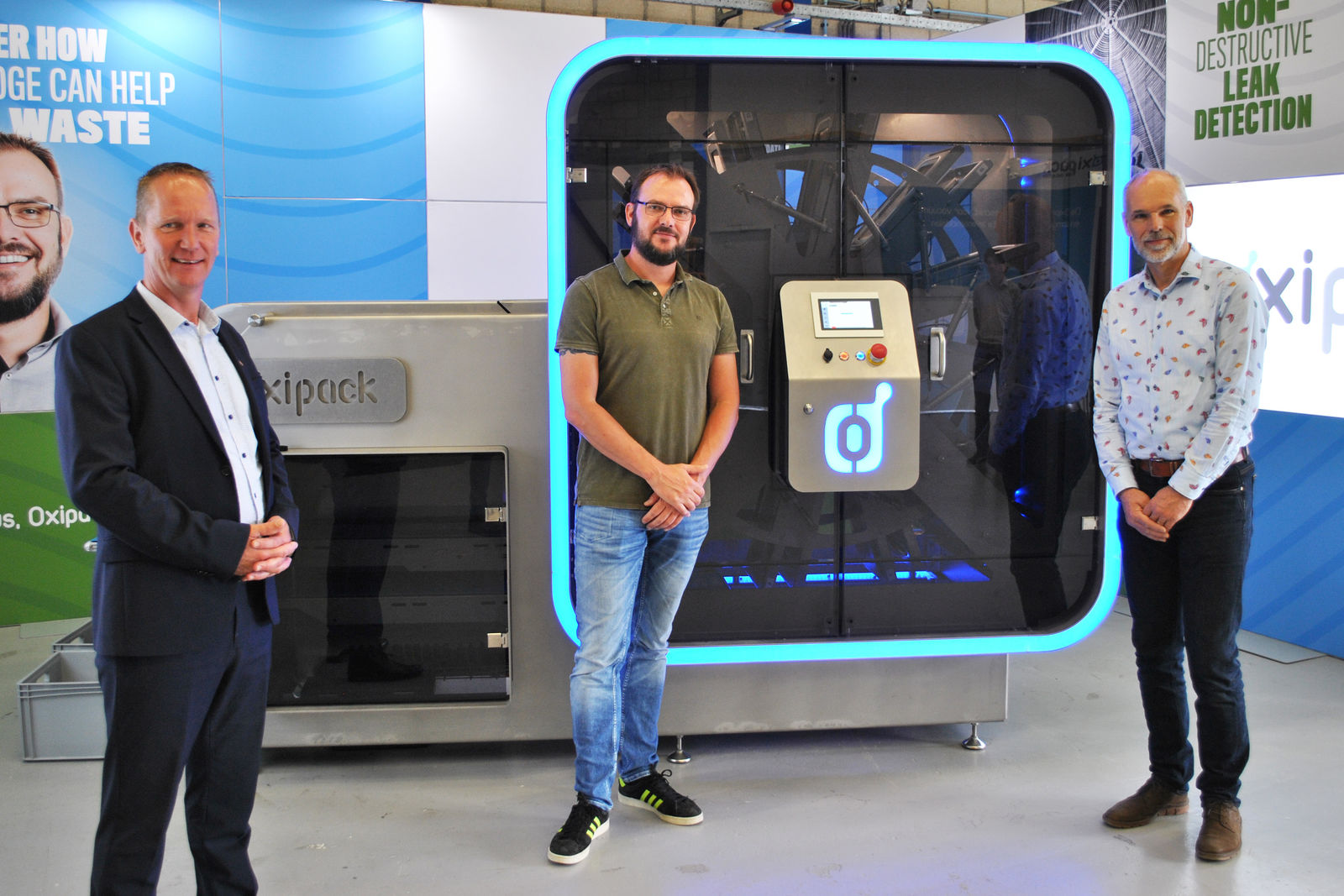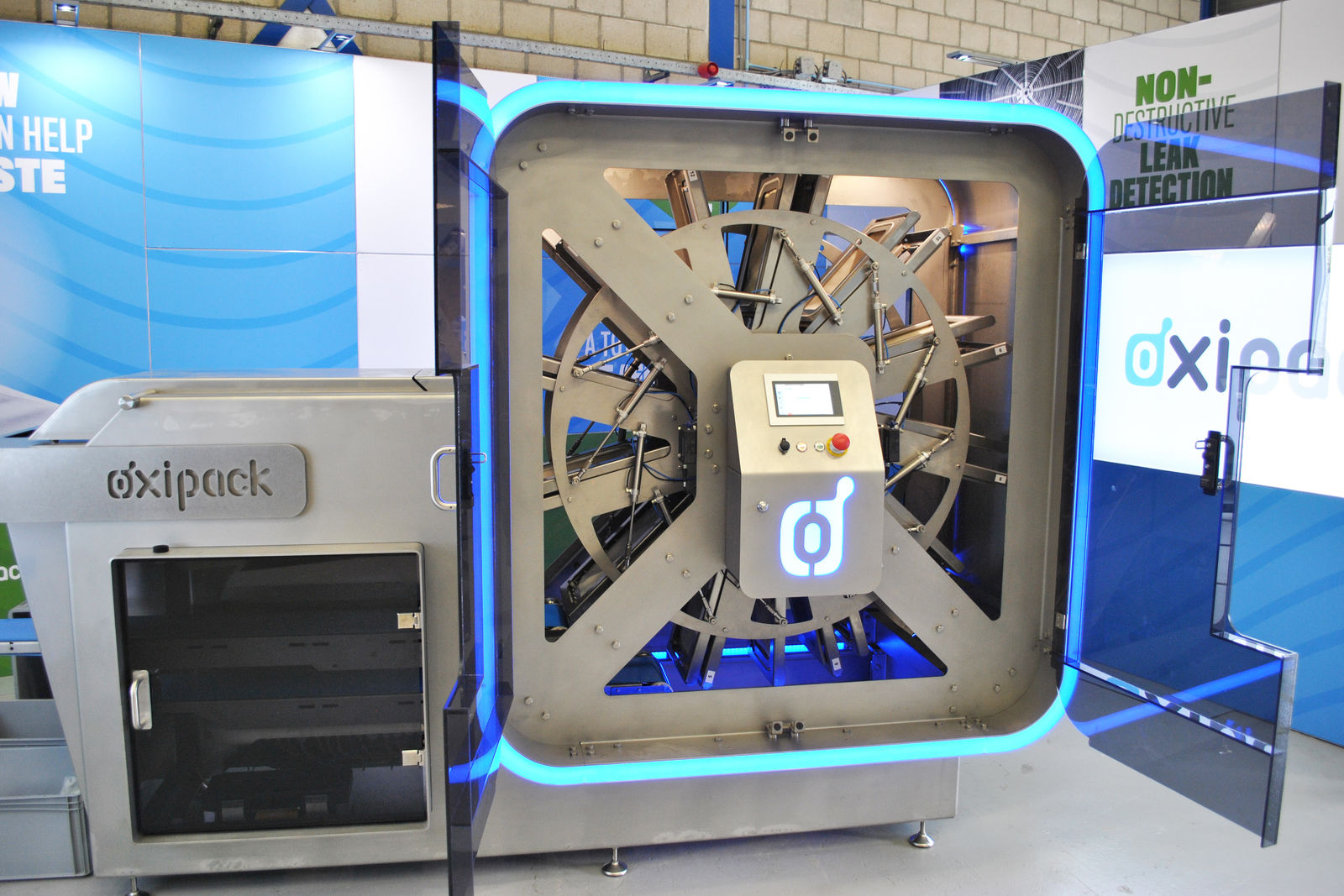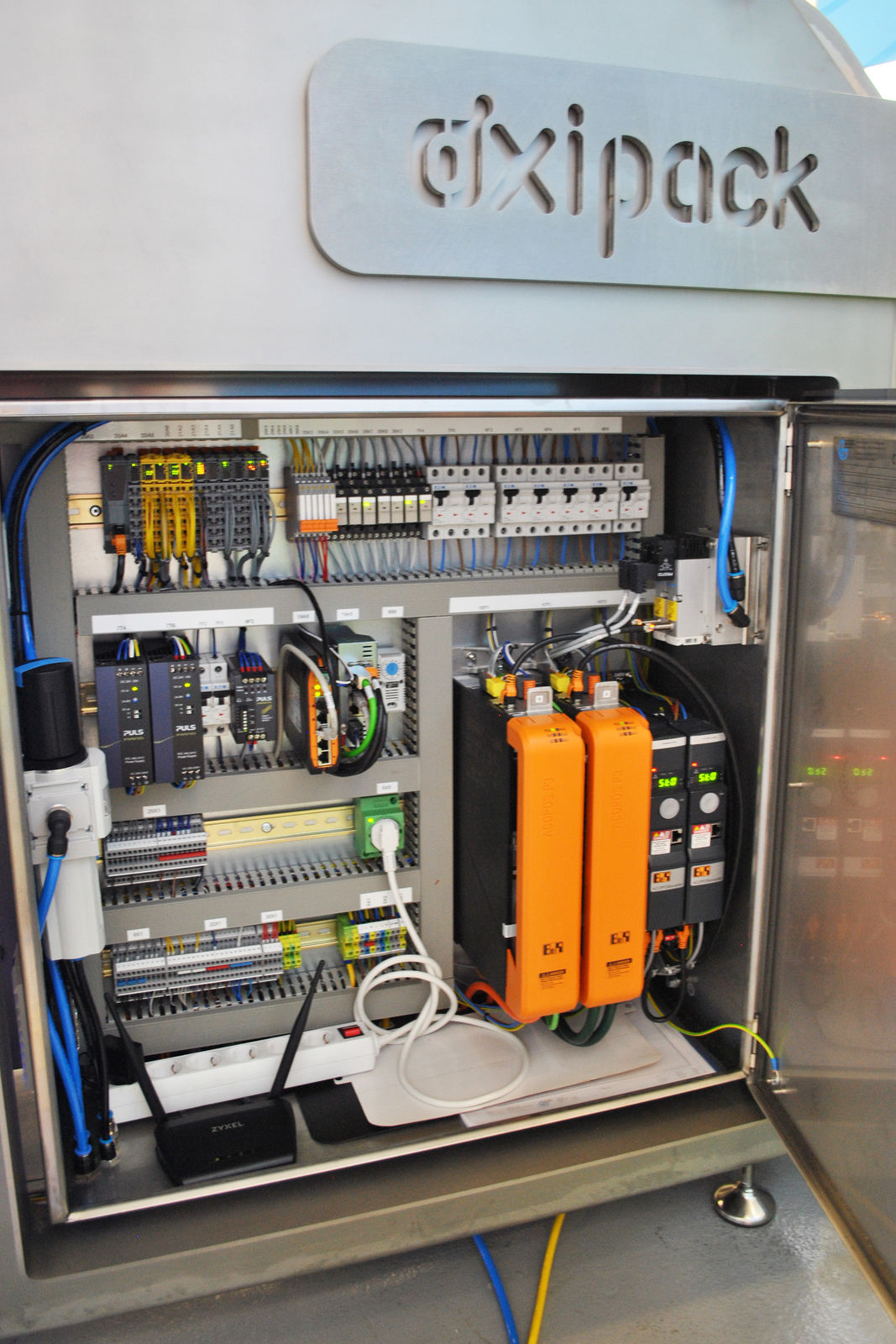For foods and pharmaceuticals sealed in airtight packaging, leak testing is a critical step in the production process. Oxipack's new inspection unit, The Rotary, detects microscopic leaks without harming the product. Through close cooperation with machine builder Geurtsen and the control experts at B&R, the Dutch specialist's solution is efficient enough to test every item passing through the line.

In the perpetual pursuit of waste reduction and quality improvement, companies in the food and pharmaceutical industries attach great importance to packaging. Among the most important objectives is the removal of leaky packaging from the process as early as possible. Often, this is done by immersing random samples in water to see if any air bubbles escape. Such manual checks lack reliability and are not precise enough to detect microscopic holes. Though small enough to evade manual detection, these microleaks are still large enough to spoil a product before its official use-by date, resulting in unnecessary costs and posing a potentially image-damaging health risk to consumers.
Oxipack Leak Detection has developed an alternative method based on innovative vacuum technology. "The idea is fairly simple," says Pim Jobse, technical manager of the company based in the Dutch city of Houten. "You place the product between two rubber membranes, seal everything and create a vacuum. If the packaging is closed properly, nothing will happen. But if there is a small hole in it, the pressure in the vacuum chamber will continue to rise." This approach makes it possible to detect leaks as small as ten microns. And, importantly, it does so without damaging or contaminating the packaging – so it's possible to check every single product rather than just random samples.
Like the water immersion method, vacuum detection also takes time. "The whole process takes about half a minute start to finish," Jobse knows. That posed a challenge for the Oxipack engineers: To meet the market's demand for inline leak detection, they would need to check 120 units per minute. The company therefore sought out a machine building partner to develop a solution with the necessary efficiency and the smallest possible footprint.

Universal development environment
Oxipack found the innovative development partner it was looking for in Machinefabriek Geurtsen. For controls, the machine builder has been standardizing on B&R technology for years. "That's largely because of how easy B&R's Automation Studio platform makes it to program and control everything," says Geurtsen's chief designer, Wardo Dietrich. "Whatever you hook up to your system, it communicates. For a programmer, being able to do everything in one familiar environment is ideal."
"I was convinced in ten minutes," says Jobse. In addition to the ease with which all his questions were answered, Jobse was particularly impressed by the convenient controller diagnostics. "You see the status of the controller immediately, without having to do anything; it's all preprogrammed. That makes me very happy. Other vendors may tell you that there is a driver error, but it's up to you to find out what's going on and how to fix it. B&R's System Diagnostics Manager gives you quick access to detailed information along with a recommended solution."
Reduced floorspace
Oxipack had some clear ideas about what it wanted from Geurtsen's developers. "Because of negative experiences in the past, I was originally instructed not to develop a carousel," says Dietrich. He therefore came up with a number of alternative concepts, such as a solution in which the vacuum chambers are arranged in a kind of bookcase during measurement. In the end, however, almost all ideas turned out to be too cost intensive, and only one serious option remained. "Like it or not, a carousel was the way to go," laughs Dietrich. But, unlike the horizontal carousel Oxipack had used previously, Dietrich greatly reduced the required floorspace by flipping it on its side like a Ferris wheel.
The solution, called The Rotary, contains up to twelve measuring chambers. As each product completes its turn on The Rotary, the air is evacuated from the chamber and the measurement is taken. By the time it returns to the starting point, it is clear whether the packaging is good or should be rejected, and the product slides onto the corresponding belt.

For the infeed, Geurtsen opted for a shuttle conveyor, which retracts at the last moment while the belt continues to advance. "That drops the product quietly and neatly into place," says Dietrich. "It's a method we use quite often, but with the infeed going into a rotating wheel, the timing was very tight." Through extensive testing and collaboration, Geurtsen and B&R arrived at a successful solution.
The perfect synchronization of the infeed belt and rotary wheel was made possible by a fully integrated motion control system from B&R that includes servo drives, inverters and safety technology. Control of The Rotary is handled by a B&R Panel PC 2100, which combines HMI and powerful PC-based control in a single device. "Thanks to the use of software components from B&R's mapp Technology toolkit," says Jobse, "the infeed shuttle conveyor can be set up for different packaging without any complicated calculations – it's a simple matter of setting a few main parameters." The mapp component for recipe handling makes it quick and easy for machine operators to switch between products of different sizes and weights. By using sensors to automatically determine the product parameters, it's even possible to handle combinations of products running at the same time.

Scalable and compact
The first unit built by Oxipack and Geurtsen went to an Italian customer for testing. "With the current setup, they're able to check 20 products per minute," says Jobse. For real inline measurement during production, a speed of about 120 packages per minute will be required. "That's where the modular design pays off," notes Jobse. "They can easily add five more wheels without a significant impact on the footprint of the packaging line."
 | Wardo Dietrich Chief Designer, Machinefabriek Geurtsen "For controls, we have been standardizing on B&R technology for years. That's largely because of how easy B&R's Automation Studio platform makes it to program and control everything. Whatever you hook up to your system, it communicates. For a programmer, being able to do everything in one familiar environment is ideal." |